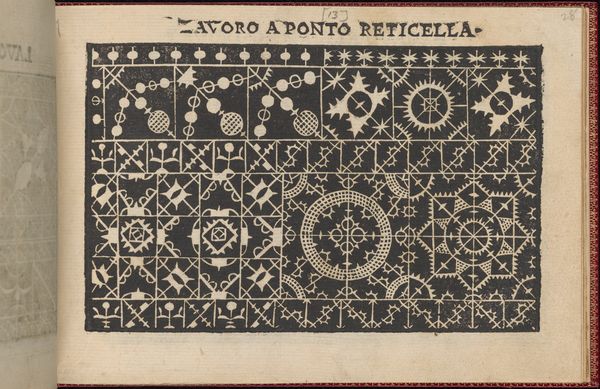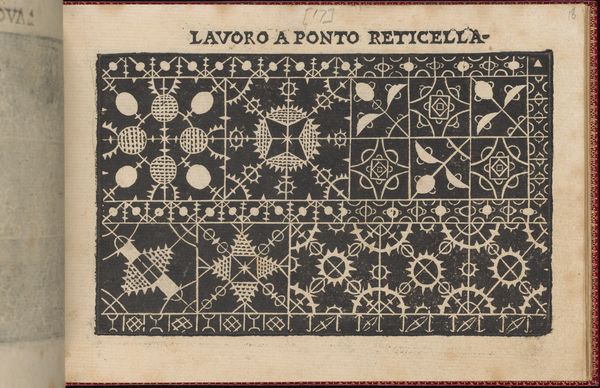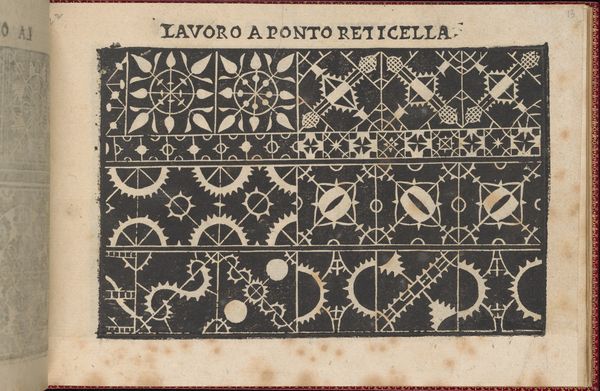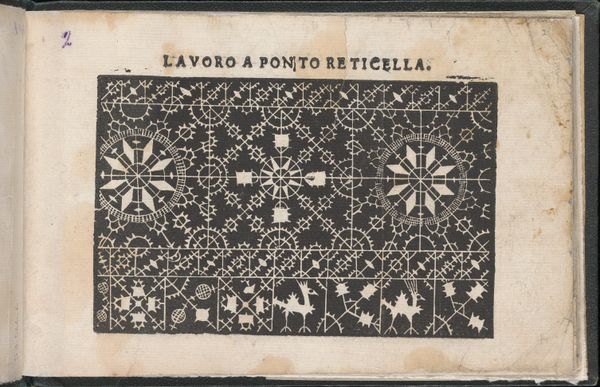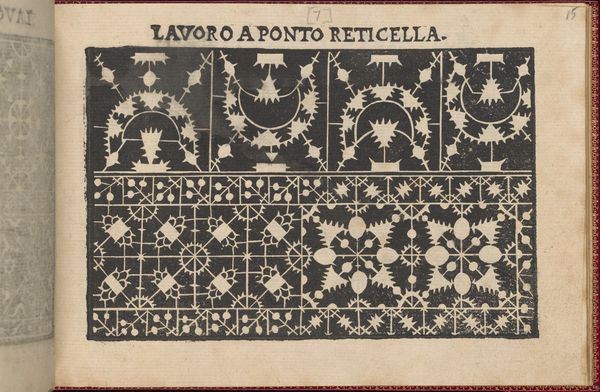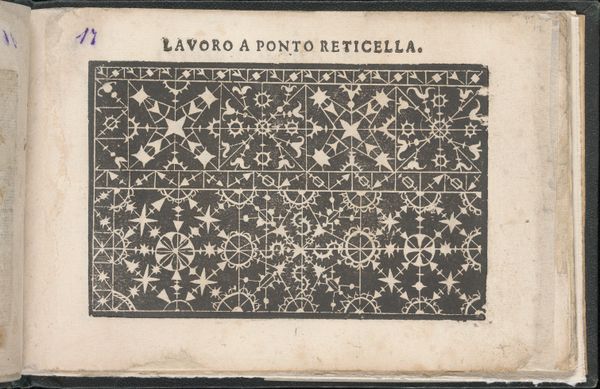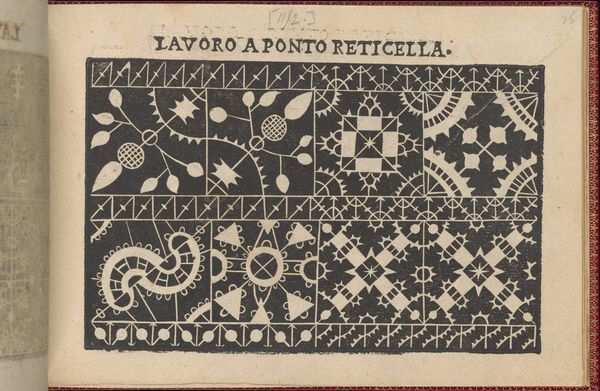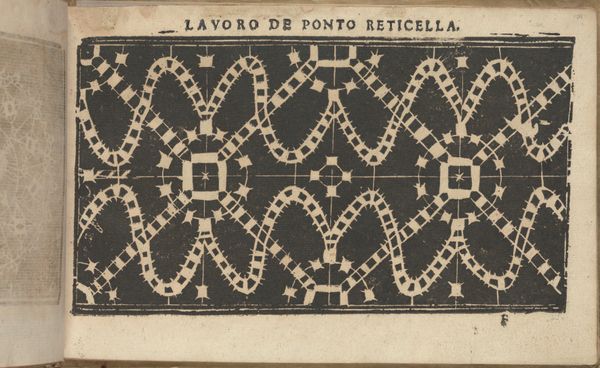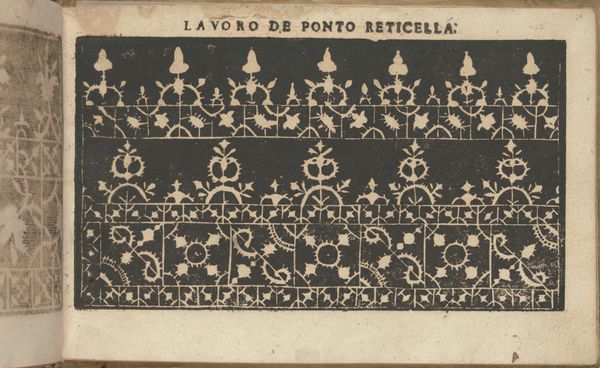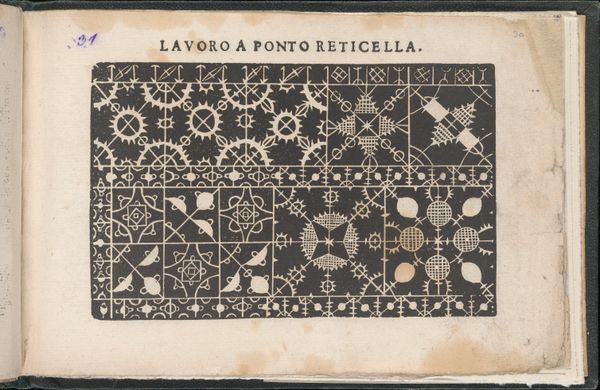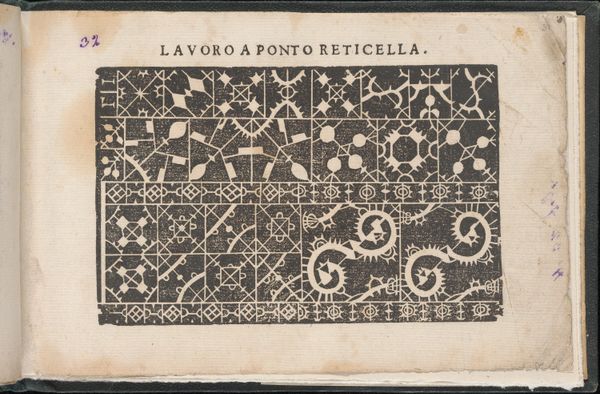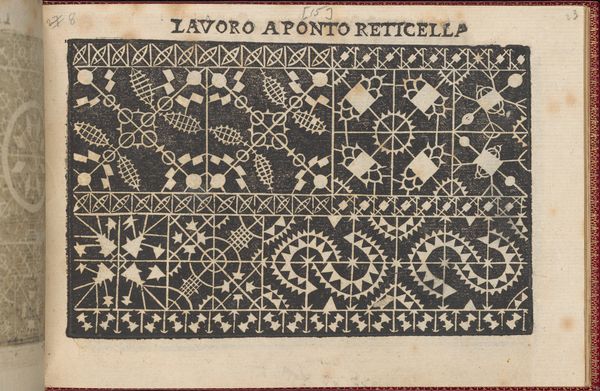
Pretiosa Gemma delle virtuose donne, page 24 (recto) 1600
0:00
0:00
drawing, print, engraving
#
drawing
# print
#
11_renaissance
#
geometric
#
decorative-art
#
italian-renaissance
#
engraving
Dimensions: Overall: 4 3/4 x 6 11/16 in. (12 x 17 cm)
Copyright: Public Domain
Curator: Immediately striking is this delicate dance between geometry and nature in this page. There’s a real sense of rhythm here, don't you think? Editor: I agree! At first glance, this print evokes a feeling of intricacy, almost like looking into the elaborate workings of an antique clock. Can you tell us more about what we’re seeing? Curator: Of course. We’re looking at a page, specifically page 24, from *Pretiosa Gemma delle virtuose donne*, which translates to "Precious Gem of Virtuous Women". It was created around 1600 by Isabella Catanea Parasole. The page showcases a design for needle lace. Editor: Needle lace, an exquisite craft so highly prized, so historically associated with female virtue, artistry and labor! Is this a drawing? Curator: The artwork we see is indeed rendered as an engraving, showcasing a pattern book page featuring geometric and natural motifs designed to be copied and used in needle lace work. You'll notice the precise symmetry. These designs were tools for the aspirational craftswomen. Editor: These patterns offer insight into the domestic lives and artistic capabilities of women in the Renaissance. Look closely, and amidst the geometric forms, you will see stylized animals woven in. How are animals represented here? What about geometric shapes? Curator: Yes, observe how birds become nearly abstract elements within the design, they lose their "birdness", acting instead as symbols. As for geometric forms: circles become mandalas radiating symmetry. It’s about imbuing domestic crafts with meaning. Editor: So, beyond the immediately aesthetic, one gets a sense of Parasole imbuing these quotidian acts with higher spiritual meaning. A type of "domestic symbolism" worthy of artistic consideration. What could this mean to its target audience of "virtuous women"? Curator: This interplay highlights the social role of women during that time period—expected to engage in "virtuous" activities, while simultaneously being incredibly skillful artists in their own right, interpreting cultural symbols through domestic skills. They carry collective memories in visual forms like these. Editor: This piece provides a beautiful snapshot of a historical craft, revealing not just technical skill but a fusion of art, culture, and the everyday lives of women. Curator: Indeed. It offers insight into a world where geometry dances with nature, and domesticity merges with artistry.
Comments
No comments
Be the first to comment and join the conversation on the ultimate creative platform.

